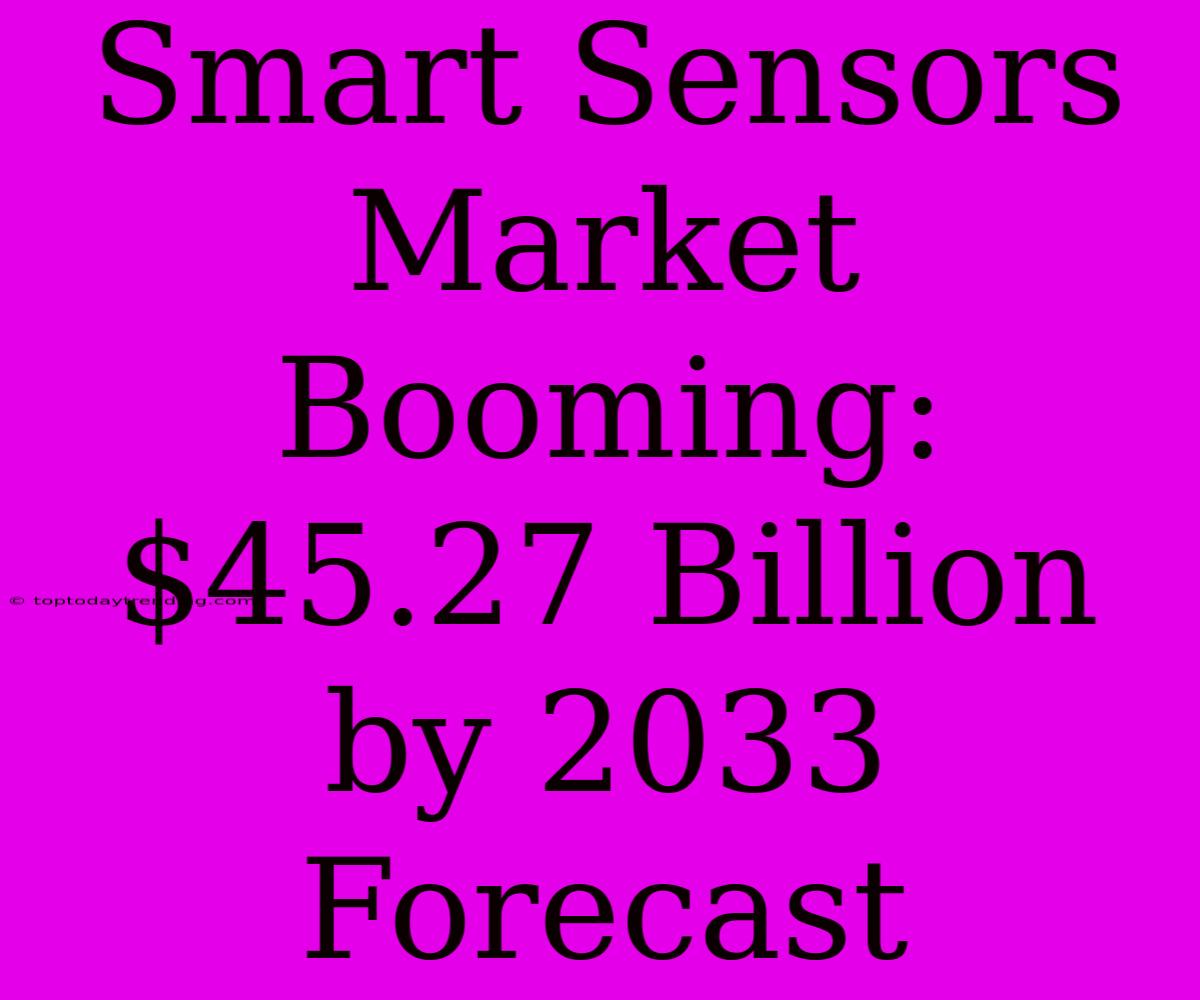Smart Sensors Market Booming: $45.27 Billion by 2033 Forecast
The global smart sensors market is experiencing a surge in demand, driven by the increasing adoption of Internet of Things (IoT) technologies across various industries. This growth is fueled by the inherent advantages of smart sensors – enhanced accuracy, real-time data collection, and improved efficiency.
What are Smart Sensors?
Smart sensors are advanced sensing devices that incorporate microprocessors and communication protocols to perform complex data processing and transmission. Unlike traditional sensors, which simply collect data, smart sensors analyze and interpret the collected information, enabling intelligent decision-making and automation.
Market Growth Drivers
- IoT Expansion: The widespread adoption of IoT across various industries, from manufacturing and healthcare to agriculture and smart cities, is a key driver of smart sensor growth.
- Data Analytics and Insights: Smart sensors generate vast amounts of valuable data, which can be analyzed to optimize processes, improve operational efficiency, and uncover new insights.
- Industrial Automation and Robotics: The increasing use of automation and robotics in industries like manufacturing and logistics requires advanced sensing capabilities, propelling the demand for smart sensors.
- Demand for Predictive Maintenance: Smart sensors enable predictive maintenance by monitoring equipment and predicting potential failures, reducing downtime and improving maintenance efficiency.
- Government Initiatives and Funding: Governments worldwide are actively promoting the adoption of IoT and smart sensors, providing incentives and funding for research and development.
Key Market Segments
The global smart sensors market is segmented by:
- Technology: Optical, Acoustic, Pressure, Temperature, Humidity, Magnetic, Chemical, Gas, and others.
- Application: Industrial Automation, Automotive, Healthcare, Consumer Electronics, Aerospace and Defense, Agriculture, and others.
- End-user: Manufacturing, Energy & Power, Transportation, Healthcare, Retail, and others.
Forecast and Future Trends
The smart sensors market is projected to reach $45.27 billion by 2033, exhibiting a CAGR of 11.9% during the forecast period. This growth is attributed to several factors, including:
- Advancements in Sensor Technology: Emerging technologies like MEMS (Micro-Electro-Mechanical Systems) and NEMS (Nano-Electro-Mechanical Systems) are leading to more compact, efficient, and cost-effective smart sensors.
- Integration with Artificial Intelligence (AI): The integration of AI with smart sensors is enabling intelligent data analysis and real-time decision-making.
- Cloud Computing and Edge Computing: Cloud and edge computing platforms provide the infrastructure for storing, processing, and analyzing data from smart sensors.
- Growing Focus on Sustainability: Smart sensors are increasingly used to monitor and optimize energy consumption, contributing to sustainability efforts.
Challenges and Opportunities
Despite the strong growth potential, the smart sensors market faces certain challenges:
- Cybersecurity Concerns: The connectivity of smart sensors creates vulnerabilities for cyberattacks, requiring robust security measures.
- Interoperability Issues: Ensuring seamless communication and data exchange between various sensor networks and platforms is a major hurdle.
- High Initial Investment Costs: Implementing smart sensor systems can be expensive, posing a challenge for some businesses.
However, these challenges also present opportunities for innovation:
- Developing Secure and Reliable Sensor Networks: Companies are focusing on developing secure sensor networks with robust encryption and authentication mechanisms.
- Standardization and Interoperability Initiatives: Industry bodies are promoting interoperability standards to facilitate seamless communication between different sensor systems.
- Cost-effective Sensor Solutions: Companies are working on developing cost-effective smart sensor solutions to increase accessibility for a wider range of applications.
Conclusion
The smart sensors market is poised for significant growth in the coming years, driven by the increasing adoption of IoT, advancements in sensor technology, and the growing demand for intelligent data analysis. While challenges exist, the market offers vast opportunities for innovation and growth. As technology continues to evolve, we can expect to see even more sophisticated and integrated smart sensor solutions driving innovation across various industries.

